 |
 |
 |
| |
CT Signals of Chronic Lung Disease in HIV Patients Who Never Smoked
|
| |
| |
18th International Workshop on Comorbidities and Adverse Drug Reactions in HIV, September 12-13, 2016, New York
Mark Mascolini
Almost 1 in 6 HIV-positive people in a large Italian clinic had CT signs of chronic lung disease--particularly emphysema--even though they never smoked [1]. The study tied emphysema to visceral and epicardial adiposity, findings leading the researchers to suggest that a common pathway links lung abnormalities and excess fat.
Because chronic obstructive pulmonary disease (COPD) affects 10% to 16% of people with HIV, and because HIV triggers a heightened chronic inflammatory response, Giovanni Guaraldi and colleagues at the Modena HIV clinic hypothesized that "the inflammatory milieu associated with chronic HIV infection may play a role in the induction of an HIV-related COPD."
To test this hypothesis they recruited 329 consecutive antiretroviral-treated HIV patients who never smoked and never got referred for acute pulmonary disease. All participants attended the HIV clinic sometime between 2006 and 2015 and none had heart disease or acute lung disease. Three radiologists evaluated and rated CT pulmonary findings by consensus.
The study group included 243 men and 86 women with respective average ages of 50 and 48.3. Men had a significantly greater body mass index (average 25 versus 23.7 kg/m2, P < 0.01) and a worse Framingham cardiovascular risk score (median 4 versus 0, P < 0.01). CD4 count averaged 626 in men and 590 in women, a nonsignificant difference. No women and only 3 men had prior Pneumocystis pneumonia.
CT detected lung abnormalities in 16% of participants. Among people with lung abnormalities, 62% had an emphysema severity score indicating mild emphysema, 13% moderate emphysema, and 25% severe emphysema. CT analysis also revealed bronchial wall thickening in 39% of participants, bronchiectasis in 16%, respiratory bronchiolitis in 12%, and nodules 4 mm or larger in 10%. Symptoms that occurred at least a few days a month included cough in 22%, expectoration in 14%, shortness of breath in 17%, and "whistles" in 8%.
Compared with people without emphysema, those with emphysema were significantly older (average 53.7 versus 48.9 years) and had significantly greater body mass index (average 25.6 versus 24.5, P = 0.05), more visceral adipose tissue (155 versus 124, P < 0.01), more epicardial adipose tissue (102 versus 69.7, P < 0.01), a greater coronary calcium score (68.9 versus 8.3, P < 0.01), and a higher Framingham cardiovascular risk score (4 versus 0, P < 0.01). In multivariate logistic regression, two factors remained independently associated with emphysema: each year of age (adjusted odds ratio [aOR] 1.098, 95% confidence interval [CI] 1.03 to 1.77, P = 0.01) and epicardial adipose tissue (aOR 1.015, 95% CI 1.001 to 1.029, P = 0.03).
The Modena team concluded that CT signs of chronic lung disease, particularly emphysema, are common in HIV-positive people who never smoked and probably represent a chronic subclinical lung injury. The associations between excess adipose tissue and emphysema, the researchers suggested, point to a common pathogenetic mechanism linking the two conditions. They noted that the associations between visceral and epicardial adipose tissue and lung disease reflect previous research linking at least excess visceral fat to COPD via inflammatory pathways (see conclusions in reference citations 2 and 3).
"The missing link between the two" conditions, the researchers suggested, may be "proinflammatory cytokines or tissue inflammatory agents" not assessed in this study. Guaraldi proposed that if (1) it affects HIV patients, (2) is a lung disease, (3) is chronic, and (4) is not obstructive, it is not COPD, but it may be CHPD: chronic HIV pulmonary disease.
References
1. Scaglioni R, Besutti G, Malagoli A, et al. CT abnormalities in never-smoking HIV patients. 18th International Workshop on Comorbidities and Adverse Drug Reactions in HIV, September 12-13, 2016, New York. Abstract O11.
2. Furutate R, Ishii T, Wakabayashi R, et al. Excessive visceral fat accumulation in advanced chronic obstructive pulmonary disease. Int J Chron Obstruct Pulmon Dis. 2011;6:423-430. "Conclusion: COPD patients have excessive visceral fat, which is retained in patients with more advanced stages of COPD or severe emphysema despite the absence of obesity."
3. van den Borst B, Gosker HR, Koster A, et al. The influence of abdominal visceral fat on inflammatory pathways and mortality risk in obstructive lung disease. Am J Clin Nutr. 2012;96:516-526. "Conclusion: Our data suggest that excessive abdominal visceral fat contributes to increased plasma IL-6, which, in turn, is strongly associated with all-cause and cause-specific mortality in older persons with obstructive lung disease." http://ajcn.nutrition.org/content/96/3/516.long




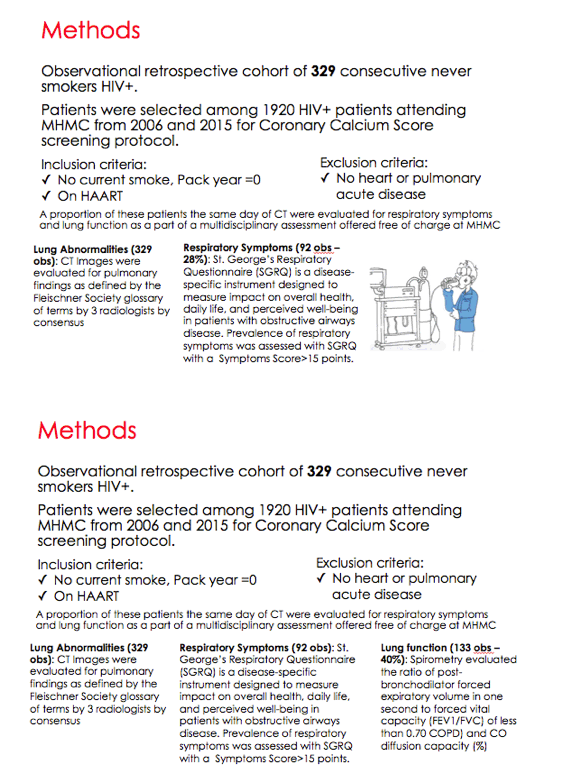
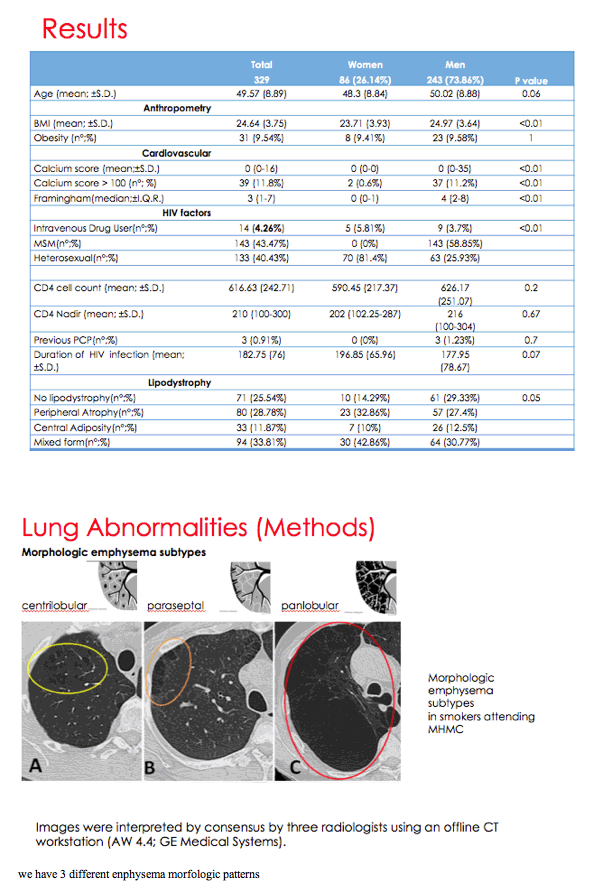




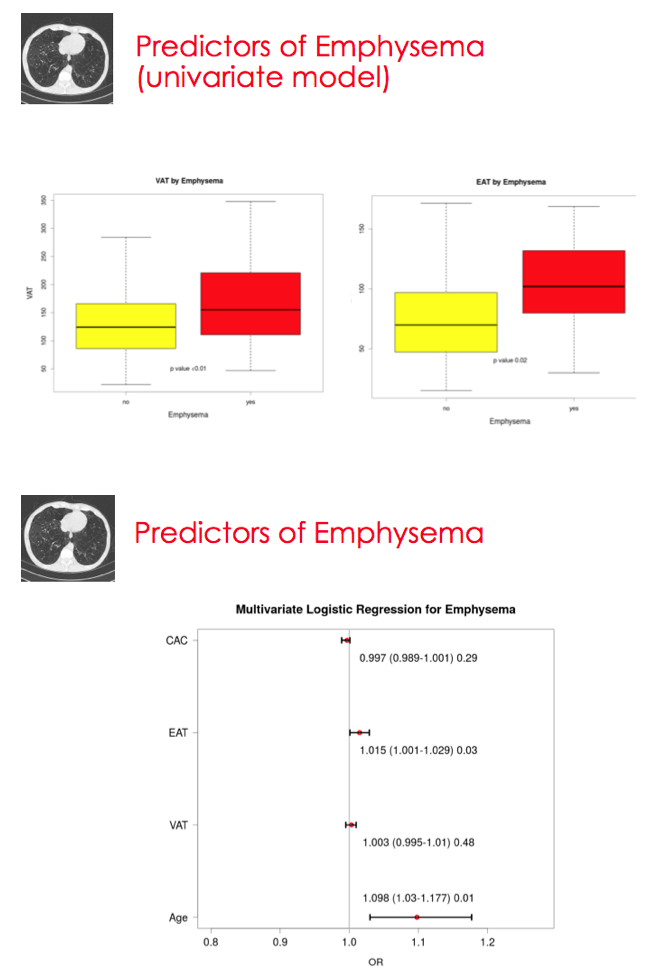

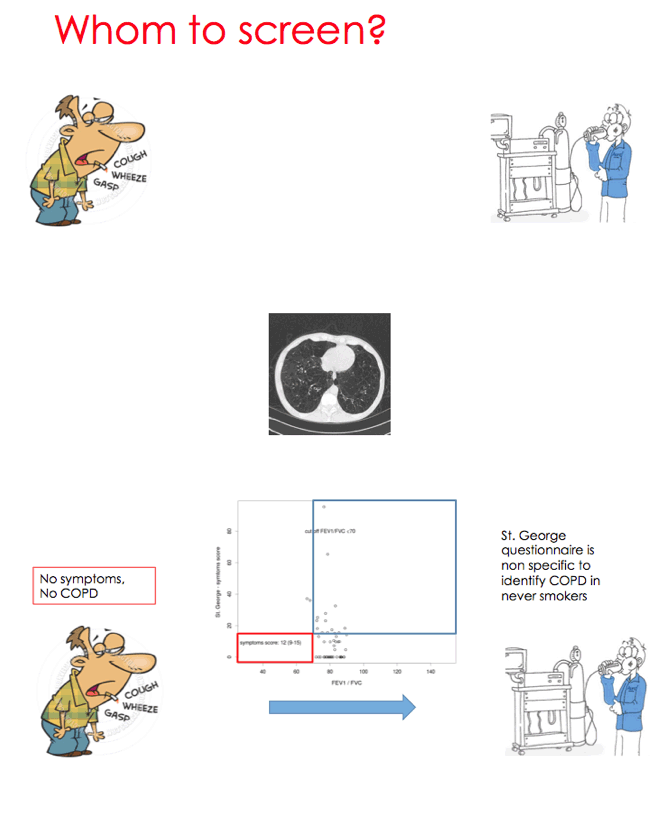
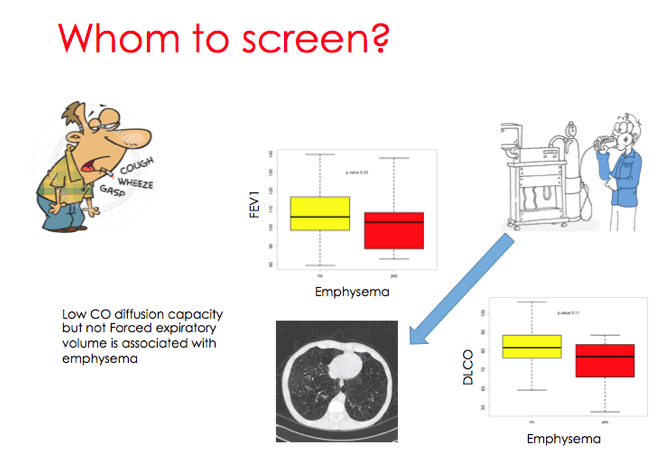

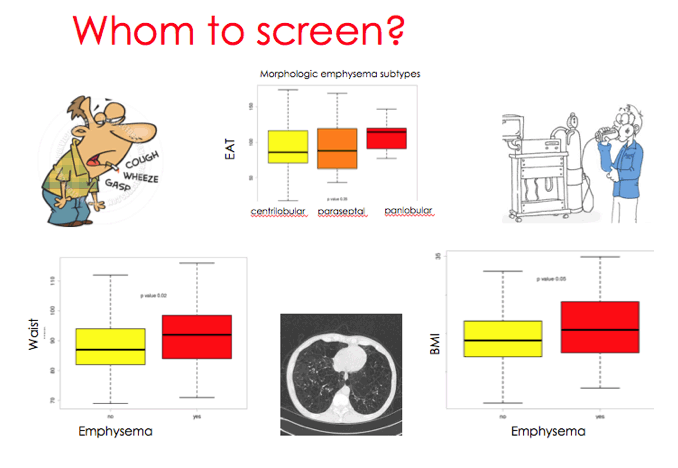
|
| |
|
 |
 |
|
|